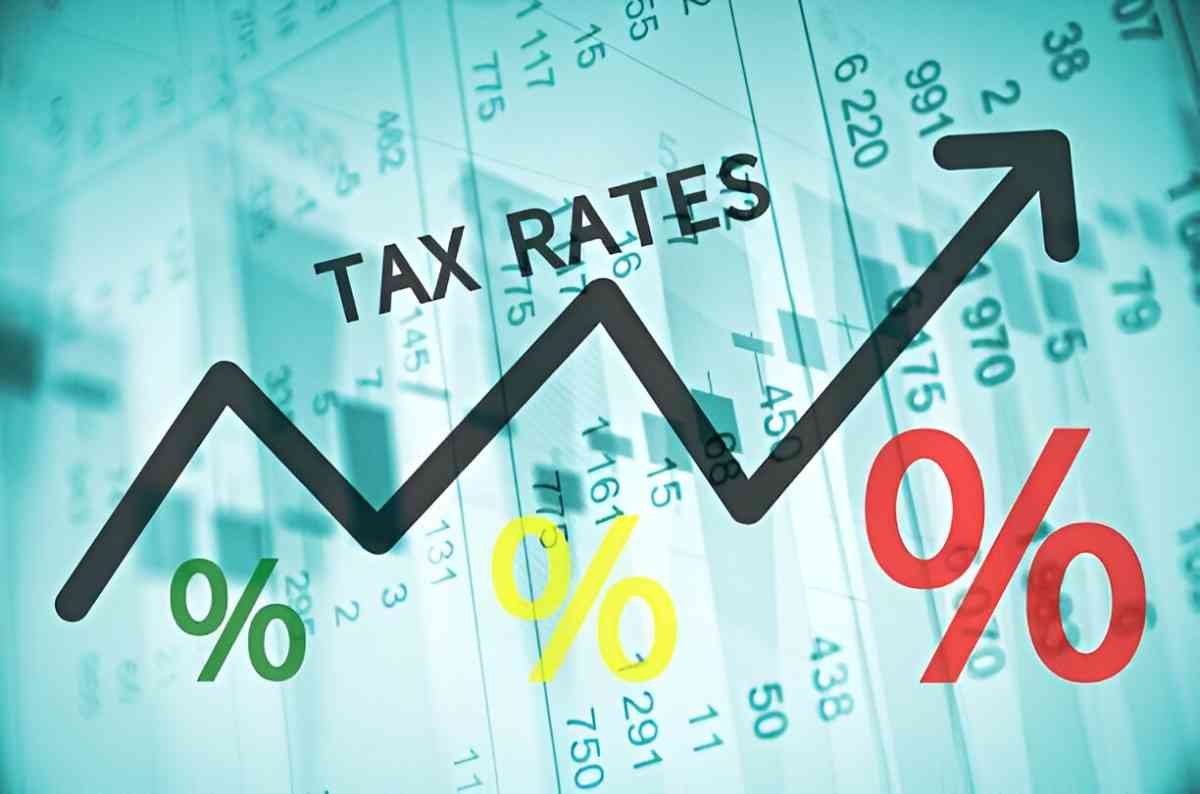When I first started working full-time, I didn’t think much about income taxes. I just knew money came out of my paycheck, and I figured that was the cost of earning. But when I got a raise and noticed a larger portion of my income disappearing, I realized it was time to understand personal income tax, especially the higher-rate brackets. This guide is what I wish I had back then: a plain-English breakdown of how higher-rate tax works in the US.
Table of Contents
What Is Personal Income Tax?
Personal income tax is a tax the government collects from individuals based on the income they earn. In the US, it’s a progressive tax. That means the more I earn, the higher the rate I pay on the additional income. But not all my income is taxed at that higher rate – just the part that exceeds specific thresholds.
Let’s begin with the basics.
The Progressive Tax System
In a progressive system, my income is divided into chunks, and each chunk is taxed at a different rate. These chunks are called tax brackets. Here’s a simplified version of how it worked for 2024 (filing as a single taxpayer):
| Income Range | Tax Rate |
|---|---|
| $0 to $11,000 | 10% |
| $11,001 to $44,725 | 12% |
| $44,726 to $95,375 | 22% |
| $95,376 to $182,100 | 24% |
| $182,101 to $231,250 | 32% |
| $231,251 to $578,125 | 35% |
| Over $578,125 | 37% |
Let’s say I earned $120,000 in 2024. My income wouldn’t be taxed at a flat rate. Instead, it would be sliced across the brackets:
- First $11,000 at 10%
- Next $33,725 at 12%
- Next $50,650 at 22%
- Final $24,625 at 24%
So, \text{Total Tax} = (11,000 \times 0.10) + (33,725 \times 0.12) + (50,650 \times 0.22) + (24,625 \times 0.24)
= 1,100 + 4,047 + 11,143 + 5,910 = \$22,200That gives me an effective tax rate of about:
\text{Effective Rate} = \frac{22,200}{120,000} = 0.185 = 18.5\%I might be in the 24% bracket, but I’m not paying 24% on all of my income.
What Is the Higher-Rate Tax Bracket?
Higher-rate tax usually refers to the brackets that start at 24% or above. For 2024, these brackets start at $95,376 for single filers. This is when tax planning becomes important.
To understand how it affects me, I started looking beyond gross income and into things like deductions and credits.
Adjusted Gross Income vs. Taxable Income
Gross income is the total I earn. Adjusted Gross Income (AGI) is what I earn after adjustments like student loan interest, HSA contributions, or traditional IRA deposits. Taxable income is what’s left after subtracting the standard or itemized deductions.
\text{Taxable Income} = \text{Gross Income} - \text{Adjustments} - \text{Deductions}In 2024, the standard deduction was:
- $13,850 for single filers
- $27,700 for married couples filing jointly
If my gross income was $120,000 and I took the standard deduction of $13,850, my taxable income would be:
120,000 - 13,850 = 106,150Which puts me squarely in the 24% bracket.
The Impact of Crossing Into a Higher Bracket
It’s a myth that earning more money will leave me with less because of a higher bracket. The higher rate only applies to the portion above the threshold. So if I get a $10,000 raise, only the amount above the bracket floor gets taxed more.
Let’s take that $120,000 example. If I get a raise to $130,000, the additional $10,000 will be taxed partly at 24% and the rest possibly at 32% if it crosses the next bracket.
Let’s assume:
- Taxable income becomes $116,150
- $95,376 to $116,150 is taxed at 24%
(116,150 - 95,376) = 20,774 taxed at 24%
20,774 \times 0.24 = 4,985.76So the raise doesn’t lose value; it just faces higher marginal tax.
Deductions and Credits
To reduce my higher-rate tax liability, I started using deductions and credits more strategically.
Common Deductions:
- Student loan interest
- Traditional IRA contributions
- HSA contributions
- Mortgage interest
- Charitable donations
Common Credits:
- Child Tax Credit
- Lifetime Learning Credit
- Saver’s Credit
Credits directly reduce tax liability, while deductions reduce taxable income.
Illustration: Two Scenarios
Let’s look at two simplified tax profiles:
| Detail | Scenario A | Scenario B |
|---|---|---|
| Gross Income | $120,000 | $120,000 |
| Deductions | $13,850 | $13,850 + $5,000 IRA |
| Taxable Income | $106,150 | $101,150 |
| Marginal Rate | 24% | 22% |
| Tax Due (est.) | $22,200 | $21,000 |
Scenario B drops into a lower marginal rate for part of their income. Using retirement accounts can keep income below the higher threshold.
How Higher-Rate Tax Interacts with Other Taxes
Income tax isn’t the only bite. There’s also:
- Social Security tax: 6.2% on income up to $168,600
- Medicare tax: 1.45% on all earned income, plus 0.9% for high earners over $200,000 (single)
Together, these add layers of complexity to effective tax rates.
Planning Strategies
Here’s how I learned to reduce my tax exposure:
1. Max Out Pre-Tax Contributions
Putting money in an HSA or 401(k) lowers my AGI. That keeps me in a lower bracket longer.
2. Use Tax Credits When Possible
Credits have more value than deductions because they cut the actual tax. I always claim education credits when I’m eligible.
3. Consider Filing Status
If married, filing jointly has higher thresholds for each bracket. It helps avoid higher rates on the same income.
4. Time Income and Deductions
If I expect to cross into a higher bracket, I may defer income or accelerate deductions to stay below it.
Higher Brackets and Investment Income
Once I hit higher rates, I also face taxes on investment income:
- Capital gains (up to 20%)
- Net investment income tax (3.8%) for income over $200,000 (single)
That includes interest, dividends, rental income, and more.
Conclusion
Understanding higher-rate tax changed how I approach money. Instead of fearing tax season, I plan for it year-round. The tax code isn’t simple, but it’s navigable once I know the levers: income, deductions, credits, and timing. Even in higher brackets, good planning can reduce what I owe. The key is to start early, stay organized, and use every tool legally available.





